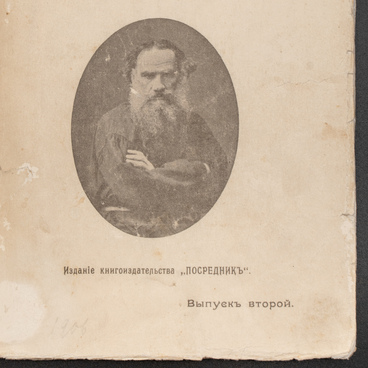The portrait of Pyotr Andreyevich Tolstoy is a family heirloom and a monument of fine art of the Peter the Great’s era. It was painted by the German master Johann Tannauer, who was personally invited to Russia by Emperor Peter the Great and served at the court for more than 25 years. Pyotr Tolstoy is depicted in a powdered wig, a doublet with gold buttons, a blue award ribbon and a white cravat.
Pyotr Andreyevich Tolstoy was the first Tolstoy to become a count. His life, with all the ups and downs in his career and the many years of faithful service to the emperor, is very characteristic of the turbulent Peter the Great era. He studied seamanship in Italy, had a good understanding of European culture, was an ambassador to Turkey, where he proved to be a brilliant and sharp diplomat. Pyotr Tolstoy represented the Russian Empire in Denmark, England and Prussia. He also wrote an detailed work “The State of the Turkish People” about the Ottoman Empire of the 18th century.
For his contribution to the victory in the Battle of Poltava, Pyotr Tolstoy was awarded a royal gift — a portrait of Peter I laid in diamonds. In 1718, Tolstoy fulfilled a personal secret commission of the tsar: he returned tsarevich Alexei to Russia, who fled from his father, Emperor Peter the Great, to Naples. Tolstoy took part in the investigation of Alexei’s case; he was the fourth out of 127 people to sign the death sentence of the emperor’s son.
For his diligence “in the case of the villain and destroyer of father and fatherland, ” Pyotr Tolstoy received the rank of head of the Secret Chancellery, as well as the position of senator. He received 1318 peasant households and over 5200 serfs; he also became the head of the Office of Secret Search Affairs. Tolstoy was in charge of the preparations for the coronation of Catherine I. On May 7, 1724, received the title of count and the family coat of arms, which reflected all of Pyotr Tolstoy’s political achievements.
After the death of Peter I and during the struggle for the throne, Pyotr Tolstoy was exiled by the slander of Alexander Menshikov to the prison of the Solovetsky Monastery together with his son Ivan. They both died in the harsh conditions of the casemate. The title of count was revoked from the Tolstoys, returning only under Empress Elizabeth, on May 30, 1760 — thirty years later.

